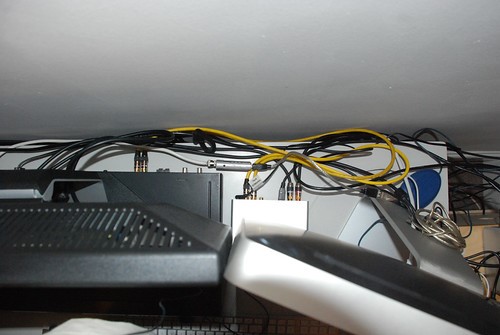The further we march in the 2000s, the more we rely on tech. A lot of this tech is too useful to ever abandon, but it does introduce issues of clutter. With digital systems comes cables and mess, which in a larger home we can overlook. Downsizing into a small living space can exacerbate tech clutter, however. Turning from a visual annoyance into a potential tripping hazard, it’s best to tackle this issue at the source when decluttering tech, for a safer, more streamlined, and better-looking environment.
First Things First
Before even considering the tech side of the equation, you need to be comfortable with exactly what you can expect from a new environment. A moving home checklist can be a great help here, so you can be sure you’re getting everything you need when you choose your completion date. You can start by determining your budget, analysing the local market, and ensuring the infrastructure you’re moving to offers what you need. Unreliable power or spotty internet could be revealed with these checks, and failures on these lines could stop your plans before you start if you rely on tech to work from home.
Room Setup Matters
We all know that room layout is essential in decluttering, but we tend to underestimate tech’s part in this equation. Running with active devices means you’ll need to build your tech hub over and around your power sockets to avoid running cables around the room. There’s really no way around this short of modifying the power setup of a building, which is expensive and unavailable in many cases. Hide cables as far out of the way as you can which be helped by choosing the right equipment.
The Right Desk
Whether you’re using a computer station, musical setup, or digital art studio, the right desk will make a huge difference. A desk with inbuilt cable management options can prevent the spaghetti issue that plagues typical setups, and many traditional desks might be retrofitted with modifications that help in this way.
Older and larger desks can also work by simply blocking the sight of cable bundles. As long as they’re not acting as clutter themselves, desks hiding sockets and power adapters can be a useful solution. Just be sure you have a way to access these cables if you need to later. You don’t want to spend thirty minutes moving heavy items just to plug in a power cable.
Bluetooth and Wireless
Charging is a pain, but it looks better than running half a dozen cables all over your room. Bluetooth support is the best solution we have to this problem. While it’s not viable for larger systems like monitors, Bluetooth is a perfect solution for smaller tech like headphones, keyboards, mice, and gaming controllers. You’ll still need a cable to charge most of the time, but this can be done overnight when it’s not in the way.
Conclusion
With the right planning, the stereotype of the cluttered tech setup can be a thing of the past. We’re living in the future now, and in the future, everything can be wireless, or at least look that way. Plan well, put in the effort, and you’ll surprise people who genuinely ask whether your setup is even connected.

